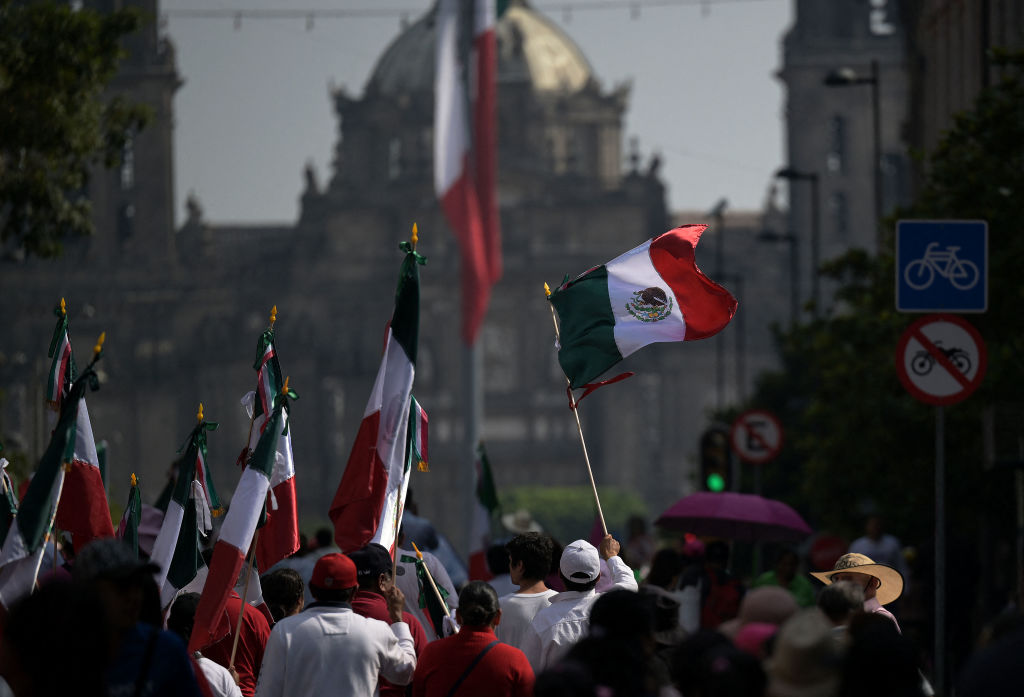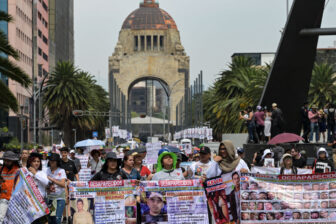As the hours tick down to Mexico’s election day, the opposition campaign is battling the perception that the outcome is a foregone conclusion. Presidential frontrunner Claudia Sheinbaum of the governing Morena party’s coalition holds more than a 20-point lead over Xóchitl Gálvez, a former senator representing a coalition of traditional parties that were one-time foes.
Despite her dominant polling lead, Sheinbaum has called on Mexico’s nearly 100 million voters to participate en masse to stave off electoral fraud. In doing so, she echoes a well-worn tactic of her political mentor, President Andrés Manuel López Obrador, who cried “fraud” when he lost the 2006 and 2012 presidential contests.
Gálvez, who argues that a Morena victory would threaten democracy, has made similar calls for high voter participation, saying “if people go out and vote, we’ll win.” With more than 20,000 seats up for grabs nationwide, there’s plenty to vote for, with much at stake beyond the presidency.
Here are three things to watch for in Mexico’s June 2 electoral outcomes.
Congress will be crucial
In February, AMLO unveiled a 20-point reform package covering everything from a GMO corn ban to making austerity a state policy. That set a legislative agenda for his potential successor: Sheinbaum launched her campaign on March 1 with a series of pledges that included the reforms to build “the second level” of AMLO’s state-focused political transformation.
Gálvez has argued that a Morena win threatens to weaken democracy in large part due to the same reform package. One reform would eliminate autonomous regulatory agencies monitoring transparency, competitiveness, and energy. Another would allow for Supreme Court justices to be elected by popular vote in a move that could give a dominant party—which today Morena is—control over another government branch. Yet another reform would end proportional representation seats in Congress. The move would cut 200 of the 500 seats in the Chamber of Deputies, halve the 128 seats in the Senate, and make it harder for smaller parties to gain legislative representation.
Morena’s alliance currently has a simple majority in both houses of Congress, short of the two-thirds support required to make constitutional changes. While polling for the lower house indicates Morena is likely to control more than half the chamber’s 500 seats, a two-thirds majority appears unlikely. With all 628 federal legislative seats up for grabs, that’s another reason for Sheinbaum’s campaign to call for massive turnout: Strong majorities in Congress would mean Morena doesn’t have to negotiate with the opposition.
The ruling party could also gain seats even after the election. The opposition’s legislative unity is fragile, based more on countering Morena than ideological alignment, and it’s common in Mexico for politicians to change parties and allegiances.
Several gubernatorial races are too close to call
In the decade since Morena became an official party, it has gained control of two-thirds of the country’s 32 governorships. On a national level, it continues to frame itself as an anti-establishment movement in opposition to the unpopular parties in Gálvez’s alliance—the National Action Party (PAN), the Institutional Revolutionary Party (PRI), and the Democratic Revolutionary Party (PRD). But, on a state level, Morena’s anti-incumbent message could hit a wall. Will the party find its territorial advance blocked for the first time?

Nine gubernatorial seats are up for grabs; Morena and its allies currently hold six, while opposition parties control the governorships in the other three. Like the president, governors are elected to a single, six-year term.
Morena’s candidates seem likely to cruise to a win in three states they currently control, but races in Morelos and Veracruz are too close to call. AMLO’s former Energy Minister Rocío Nahle is the governing party’s candidate in oil-rich Veracruz, Mexico’s fourth-most populous state. But she and the outgoing Morena governor, Cuitláhuac García, are entangled in corruption scandals.
Also in doubt is the crown jewel up for grabs: Mexico City. Both AMLO and Sheinbaum served as mayors of the capital, which is a launching pad for presidential hopefuls. Though Sheinbaum won the 2018 Mexico City race by a landslide, the governing party lost control of several boroughs during the 2021 midterms, leaving the city evenly split between opposition parties in the wealthier and middle-class west and Morena in the largely working-class east.
The city’s mayoral race appears to be as divided: polling gives Morena’s Clara Brugada a five-point lead over the PAN’s Santiago Taboada. The outcome could come down to the undecideds; 22% of capitalinos say they either haven’t picked their candidate or could change their minds.
Still, Morena-governed states aren’t the only ones where races are tight; in the opposition-controlled states of Guanajuato, Jalisco, and Yucatán, incumbent-party candidates hold single-digit leads. Results could be contested in cases where victors win with narrow margins.
Watch the youth vote
Tragedy marked the final days of the 2024 electoral cycle. During a May 22 campaign rally in Nuevo León for the Citizen’s Movement (MC) party, strong winds caused the stage to collapse. Nine people died, and nearly 200 were injured. Jorge Álvarez Máynez, the MC presidential candidate polling in a distant third, was present but unharmed. He limited campaign appearances in subsequent days.
The incident only added to the uncertainty shrouding the MC for much of the election. The party was the last to name a candidate and faces accusations it’s doing little more than helping Morena by dividing the opposition.
Still, the MC can explain how future political campaigns may shift strategies. At 38, Álvarez Máynez is 23 years younger than the two other candidates—reflected in his party’s youth-targeted campaigns. MC uses catchy campaign songs and has social media influencers in its party ranks. But while Sheinbaum followed AMLO’s campaign style in holding more than 500 campaign events nationwide, Álvarez Máynez held just over 100, focusing on making 40 stops at universities instead. When 400 universities across Mexico held a practice election round this month, Álvarez Máynez came in second with 22% of the vote, ahead of Gálvez and well above his 12-point polling position.
Whether it’s the MC or another party, Mexico’s political forces would do well to watch how the country’s youth vote. After all, nearly half of Mexican voters are under the age of 40. A recent poll of Gen Z Mexicans found they are disenchanted with political parties. The vast majority—three out of four—say the parties don’t represent them.
That leads to a question: Even if a Sheinbaum win means her government will pick up where AMLO’s left off, will voters remain committed to Morena? In time, these young voters will hold the answer.
Subscribe to the Americas Quarterly Podcast on Apple, Spotify and other platforms







